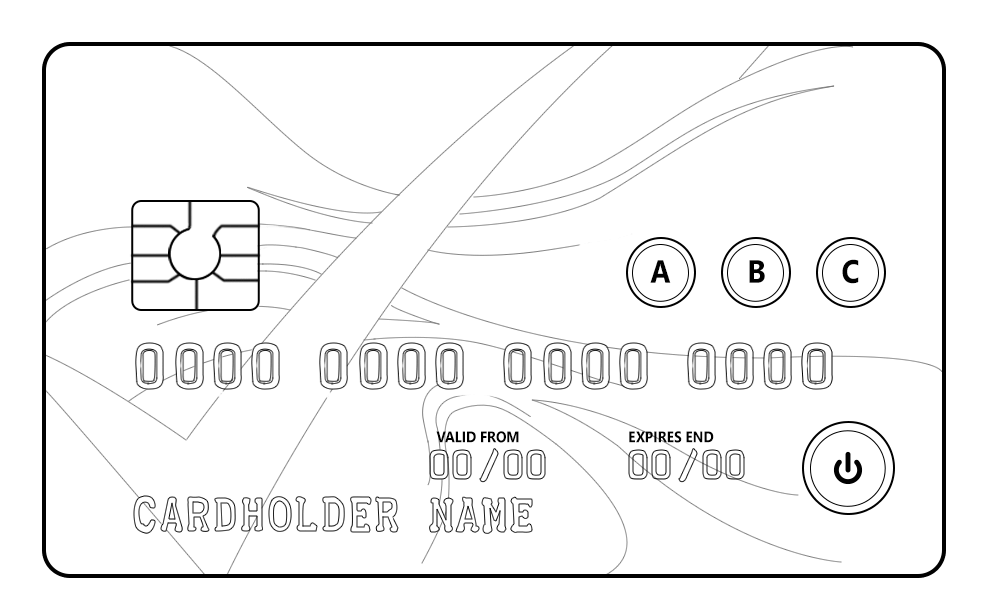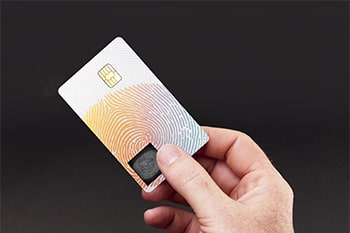Powered Card / Display Card / Biometric Card Testing
Overview
Powered cards have extended electronic features and internal power source for the purposes of enabling enhanced control, security and brand image elevation. Display Card extended features include a visual display in addition to Powered Card features. Additional biometric functionality provides even further user authentication.Powered Cards can include functions mapped to integrated buttons, keypads, biometric modules and displays. Putting control onto the cards makes more independent from your standard interfacing devices such as payment terminals. These technologies can be applied to a variety of card types including payments, identification, transport and loyalty/gift cards.

Potential Powered Card Interface (no display)
Why Test Powered Cards?
Non-standardised design changes from extensions and additions expose Powered Cards to potential violations of existing card standards and practises. Depending on the cards intended use, the design generally has to conform to the applicable standards relating to its field. Powered Cards used as credit/debit cards need to work in the same POS terminals as other payment cards. Payment cards need to have certain physical characteristics for interoperability for POS terminals and devices. In addition, any faults that occur with the card undercut the hi-tech image of the card and the brand.
CTI can check what impacts (if any) your powered card design has its relevant standards and advise on potential field performance.
Display Modules
Display features and card design vary related to the purpose of the card. Command prompts displayed in conjunction with keypads enable the independent execution of certain functions or additional functions to supplement processes. Relevant card data such as account information can be accessed and displayed. Security functions such as one-time passwords for online authentication or challenge/response command prompts.Display extensions on the card have the potential to violate existing card standards and provisions and cause it to fail in the field. For payments: physical card characteristics such as the positioning of elements or card thickness are important for maintaining machine readability.
Biometric Authentication
The use of biometric verification is a powerful extension for identification cards. Biometric verification is a probabilistic measurement of the person's identity based the biological data/physical characteristics provided. Fingerprints, retina / iris scanning, voice recognition, facial patterns or movement/behaviour patterns can provide multi-factor identification unique to the user.
This data is extremely difficult to forge although biological traits can be distributed similarly between people. Using multiple forms of data cross-referenced provides a less fallible probability measurement of identity. Effectiveness of the biometric verification is based on the design considerations and execution when developing the system.
This data is extremely difficult to forge although biological traits can be distributed similarly between people. Using multiple forms of data cross-referenced provides a less fallible probability measurement of identity. Effectiveness of the biometric verification is based on the design considerations and execution when developing the system.
